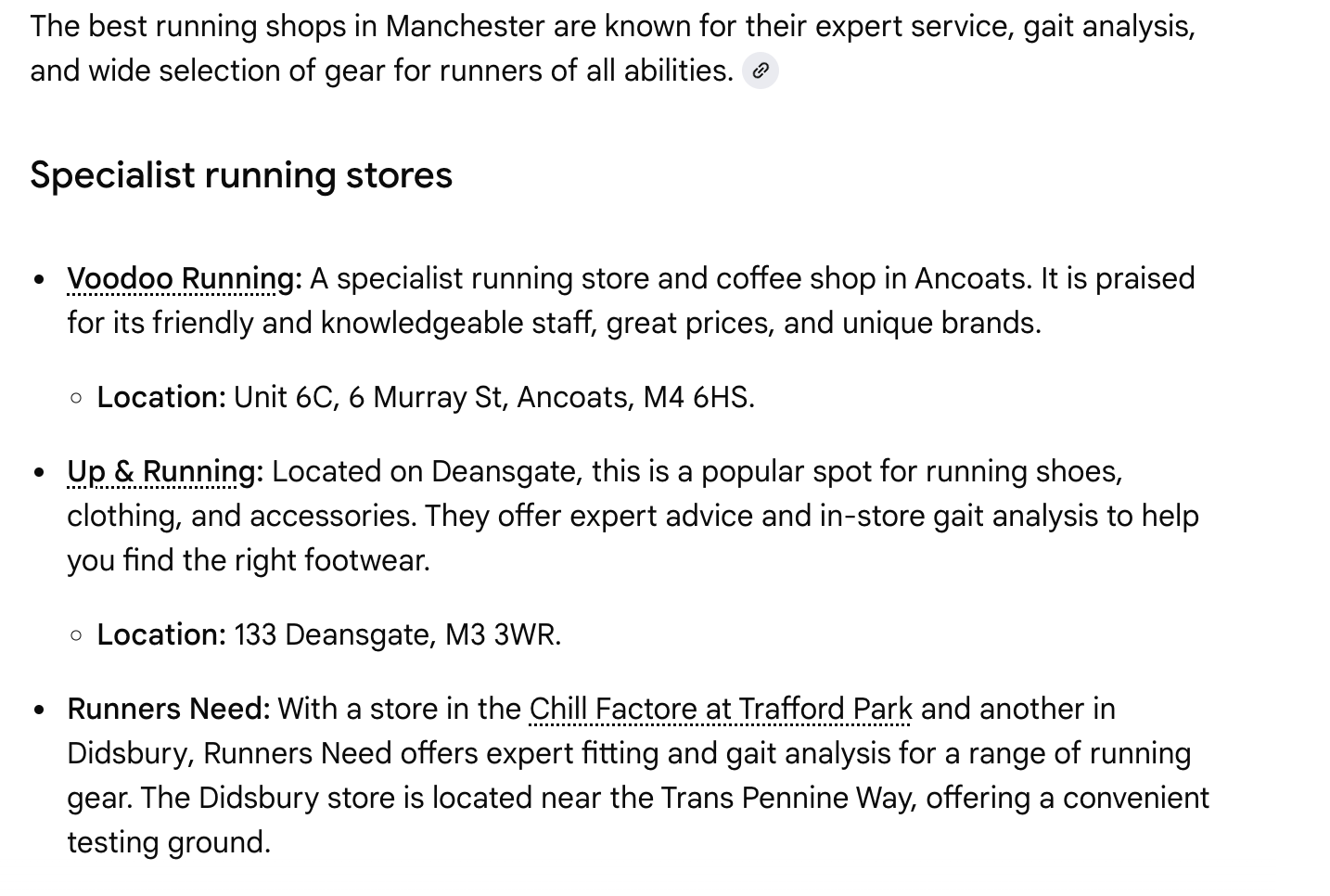Fame engineering: The key to generative engine optimization

Generative engine optimization (GEO) has quickly become one of the most important – and debated – topics in search.
Some dismiss it as little more than SEO rebranded, but the reality is that GEO demands its own set of skills.
Chief among them is fame engineering – the discipline this article explores as the most critical factor in achieving results with GEO.
What is fame?
According to marketing and advertising legend Paul Feldwick, fame consists of four essential facets:
- The offering must be significantly interesting or appealing to people.
- It must find ways to reach mass audiences.
- It must be distinctive, unique, and memorable.
- The public and media must actively engage with it, though they cannot be forced to do so.
While these aspects of fame are what traditional brands pursue, the landscape shifts dramatically when we consider GEO.
GEO is the strategic optimization of a business or brand online to increase its availability in generative engines.
The Ehrenberg-Bass Institute of Marketing Science traditionally defines marketing success through two key metrics:
- Mental availability: The likelihood of being thought of in a buying situation.
- Physical availability: The ease and convenience of being purchased from.
However, we must now consider a third crucial metric:
- AI availability: The likelihood that artificial intelligence will recommend your products, services, or business to people in a buying situation.
This is where fame engineering becomes critical: ensuring AI understands what you are and what you sell.
Dig deeper: GEO and SEO: Convergence, divergence or something in between
Transforming traditional fame for AI
Let’s examine how Feldwick’s four aspects of fame transform when applied to artificial intelligence:
- Appeal to AI: We must understand what makes content appealing to artificial intelligence systems, rather than purely human interest.
- AI distinctiveness: The key question becomes what makes your brand memorable to AI. What triggers AI systems to recall and recommend your business?
- AI distribution: Although current LLM traffic may be relatively low, preparing for AI exposure now is crucial, as platforms like Google continue to evolve. Success requires optimizing for future mass distribution through AI channels.
- AI engagement: Beyond traditional search indexes, AI systems maintain stored data. Success requires understanding how AI processes and retains information about brands.
Therefore, fame engineering strategically crafts your digital presence to enhance AI availability.
By understanding how artificial intelligence processes, stores, and retrieves information, we can engineer contextually relevant fame specifically for these systems.
So, let’s break down how.
How to appeal to AI
Understanding how AI systems search and process information is crucial for optimizing appeal.
And while there have been many articles and studies discussing this, we can boil them down to two key technical components that drive AI search behavior:
- Query fan-out: When given a prompt, LLMs split, dice, and slice it into multiple search variations.
- Reciprocal rank fusion (RRF): A method for combining multiple search results effectively. (I appreciate that this is seriously dumbing this down.)
Unlike traditional search engines, which function like precision fishing rods targeting specific keywords.
LLMs operate more like industrial fishing trawlers.
They cast wide nets across vast amounts of information, guided by their understanding of user intent and context.
This fundamental difference changes how we must approach visibility and appeal. Here’s how.
Be the solution
The key to appealing to AI isn’t just about being findable. You need to offer a true solution to the user’s problem.
This involves:
- Clear positioning as a brand.
- Well-defined performance attributes.
- Explicit definition of:
- What you do.
- What you are.
- Who you help.
When LLMs cast their nets searching for solutions to user queries, your business needs to naturally align with potential problem-solution pairs.
Success comes not from trying to game the system, but from clearly articulating your solution in a way that naturally intersects with user needs.
Dig deeper: SEO in the age of AI: Becoming the trusted answer
Cultivating AI distinctiveness
To cultivate distinctiveness that resonates with AI, you need to consider and clearly articulate several key elements.
Core elements of distinctiveness
- Origins and history
- The background and evolution of your brand, product, or service.
- The story that makes you unique.
- Field of competence
- Your core capabilities.
- What you actually do and deliver.
- Your specific area of expertise.
- Points of difference
- Unique features and characteristics.
- What sets you apart from the alternatives?
- Key differentiators in your space.
- Target audience
- Who you serve.
- Specific user needs you address.
- Clear audience definition.
- Context and personality
- Product/service characteristics.
- Brand personality traits.
- Usage scenarios and applications.
- Value proposition
- Core benefits and value delivery.
- How you solve problems.
- Unique advantages you offer.
And yes, all the above is just good copywriting.
Why distinctiveness matters for AI
LLMs function as option-generators for users, seeking to match specific needs with appropriate solutions.
Without clear differentiation, AI systems cannot effectively recommend your brand or product.
Your content must:
- Clearly communicate your unique position.
- Provide detailed, distinctive information.
- Move beyond generic product descriptions.
- Offer specific, differentiating details that help AI systems understand your unique value.
The key is not just having these elements, but articulating them in a way that helps AI systems understand and categorise your distinctive qualities for relevant user queries.
In this example, where I’m looking for the best running shops in Manchester, we can see what AI mode is bringing back.

The differences between the businesses can be seen as:
- Personalized expertise (staff, gait analysis).
- Experiential retail (coffee, on-site testing grounds).
- Product exclusivity and curation.
- Strategic location synergies.
- Value-for-money positioning.
Each shop has its web copy, reviews, and performance attributes summarised in the AI mode result.
And this is what you must figure out.
Why are you different?
Now, that’s all well and good, but how exactly do you get AI to know more about you?
Dig deeper: LLM perception match: The hurdle before fanout and why it matters
Get the newsletter search marketers rely on.
See terms.
The art of AI distribution
Natural language processing systems, including LLMs, require comprehensive information to understand entities fully.
This fundamentally changes how we approach optimization compared to traditional SEO methods.
It’s not just what you are and why you do it, but it’s the multiple attributes around your business/ service/ products that we discussed earlier.
Where SEO professionals once focused on building exact match anchor text links and keyword optimization, LLMs demand a more nuanced and comprehensive approach.
They use multiple search types simultaneously and seek mutual information from various sources to fully understand brands and services.
Therefore, you need to provide AI with as much information as possible about your business.
Building a comprehensive digital presence
Businesses need to establish their presence across multiple platforms, including industry directories, professional review sites, and trusted third-party websites.
This presence should extend beyond mere listings to include detailed service information, customer testimonials, and authentic brand mentions in industry and larger media publications.
Successful AI distribution requires creating an interconnected web of information. This network helps LLMs confidently understand and recommend your brand to relevant users.
The goal is to develop a rich, authentic digital footprint that demonstrates your brand’s expertise, authority, and relevance across multiple channels and contexts.
How to build your digital presence
Network science teaches us that all successful brands, whether they’re tech giants like Facebook, disruptors like Airbnb, or personal brands, grow through the same fundamental principles.
As explained in Albert-László Barabási’s book “Linked” and Andrew Chen’s “The Cold Start Problem,” growth occurs through networks.
And according to Barabasi, networks are governed by two primary laws: growth and preferential attachment.
This is the “rich get richer” principle that we observe in society.
The rich get richer principle also applies to digital presence.
Established brands naturally attract more attention and network links and get better returns on their marketing investments.
And when I say the word link, I don’t mean backlinks. Links can occur on a mental and physical level as well.
But the question is, how do new players break into the market to establish their presence?
New entrants can break into this cycle by displaying the right fitness signals that attract attention and links – in other words, by engineering fame.
Here’s how.
Creating interest through content and actions
While large brands might leverage massive PR campaigns and influencer partnerships to build their digital presence, smaller players need to focus on being genuinely interesting.
Simply put, the smaller the brand, the less money you have to waste.
Therefore, most small businesses create content or use publicity to generate interest in their brands.
This is not traditional SEO tactics, which tend to focus on keyword-rich content, backlinks, or, more recently, ‘semantic’ topical content.
Instead, success comes from creating content and ‘doing stuff’ which leads to the creation of more content.
Such as:
- Creating compelling surveys and studies
- Speaking at industry events
- Participating in marketing events
- Generating press-worthy activities
- Producing valuable content through podcasts, books, or articles
This is what digital PR and content marketing are and do.
All of which leads to a larger network.
The network effect in practice
Building a digital presence requires getting “in the dirt” and doing the foundational work that creates a network effect around your brand.
While traditional citation building and directory listings play a role, they’re just the beginning.
The key is creating content and taking actions that naturally generate discussion, links, and mentions.
Traditional SEO elements like hub-and-spoke content strategies remain relevant, as they help LLMs understand your offering and contribute to traditional search visibility.
However, the focus must extend beyond keywords to creating genuine interest.
Remember the three Fs of advertising – fame, fluency, and feeling – and apply them to your digital presence strategy.
The ultimate goal is to become interesting enough that others naturally want to talk about, link to, and engage with your brand.
This organic network growth, driven by genuine interest rather than just keyword optimization, is what truly builds a strong digital presence for the AI age.
Which leads us to the final part of fame engineering.
AI engagement: Ensuring you’re in the training data
While we can’t always know precisely how often AI systems update their training data, we do know that maintaining a consistent, visible presence is crucial.
This requires an always-on approach to generative engine optimization consisting of continuous brand marketing, PR efforts, and interesting content creation.
The marketing landscape is evolving beyond the simple paid-search era.
While AI-powered advertising will inevitably emerge, the core focus must remain on sustained brand marketing.
Brands with a strong marketing presence are naturally referenced in relevant buying contexts.
Dig deeper: Why community is the antidote to AI overload in search marketing
The P.T. Barnum era of search
We’re entering what could be called the P.T. Barnum era of search, where success isn’t just about ranking for keywords but about “putting on the greatest show online.”
This requires:
- Making your pages easily parsable for LLMs.
- Maintaining consistent brand visibility.
- Generating genuine brand searches.
- Creating engaging, shareable content.
- Building authentic brand mentions and links.
For smaller businesses with limited budgets, GEO agencies can help develop strategic frameworks, manage citations, and create sector-specific content that builds their online presence.
The goal is to ensure your brand appears in AI training data through consistent, meaningful visibility.
The future of GEO
Generative engine optimization is evolving into a fusion of multiple disciplines:
- Copywriting.
- Brand marketing.
- Publicity.
- Content strategy.
- Social media management.
- Promotion.
In Seth Godin’s words, the goal is to “create a ruckus,” making strategic noise about your brand, its purpose, and its audience.
Success in GEO requires engineering fame through deliberate, consistent effort to build and maintain visibility across all channels where AI systems gather their data.
The brands that succeed will be those that commit to a continuous, strategic presence.
Success will require more than traditional SEO tactics. It will demand comprehensive fame engineering that makes them visible, memorable, and relevant in the AI age.
And that’s where you, as an SEO, will evolve.
Someone has to:
- Design and engineer this fame for AI.
- Make sure the copy is easy to parse.
- Confirm the visibility is happening.
- Measure the digital footprint.
- Say what’s missing.
- Figure out what’s needed.
Businesses need people to lead them into the AI era.
My question to you: Are you ready to lead? Or is it still just SEO?







Recent Comments